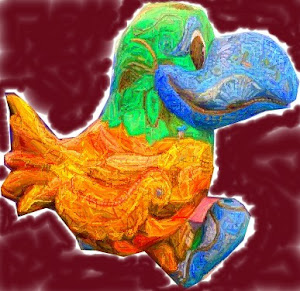
I talked about social solidarity on Monday in class, and so I was excited to see the new issue of The Sociological Quarterly in my mailbox today with an article titled “Solidarity and Drug Use in the Electronic Dance Music Scene” by sociologists Philip Kavanaugh and Tammy Anderson. In fact, some of it perfectly supplements Monday’s lecture: “Solidarity generally refers to the degree or type of integration in a society or within a social group. Initially discussed by Durkheim, solidarity is defined by personal attachments within one’s primary group (such as the family), as well as emotionally strong bonds to larger, more complex social groups” (Kavanaugh & Anderson, pg. 184). They cite two of Durkheim’s books in the bibliography.
Kavanaugh and Anderson explored the electronic dance music subculture in
Kavanaugh and Anderson suggest that both of these viewpoints are too simplistic. From their research, they created about 600 pages of field notes and 750 pages of interview transcripts. Analyzing these data, they argue that there are two broad dimensions of solidarity: social-affective and behavioral-organizational. Social-affective solidarity was built “in the moment” by creating shared experiences (pg. 189). They write “Here, drug use played an important role, as it allowed participants to develop a personal and social identity defined against their mainstream parent culture, and participate in an affectively meaningful social group that was uniquely ‘their own’” (pg. 190). Behavioral-organizational solidarity was generated through the common experiences of party-goers. This tracks somewhat with Durkheim’s notion of mechanical solidarity. Through shared experiences, like dancing until 4 in the morning, the subculture develops behavioral-organizational solidarity. They show up to the same events, they visit the same websites, they’re similarly affected by the enforcement of drug laws, and so on. Drug use plays a role in sustaining this form of solidarity as well.
But can’t drug use wreck solidarity just as easily as it can build it? Yes. The authors include an extensive discussion about the role of drugs in eroding solidarity, and they refer to this process as “detachment.” More and more participants start abusing cocaine and methamphetamines, the crime associated with illegal drug markets starts to seep into club culture, and older members of the scene become disillusioned and leave. Taken together, the relationship between drugs and social solidarity within the electronic dance music scene is much more nuanced and multifaceted than other studies have suggested. Their study is informed by sociological theory and rooted in empirical findings, and so the authors avoid both clichés that tend to dominate representations of electronic dance music culture: ravers and clubbers as a collection of alienated drugged-out kids, and raves as utopian and spiritual countercultural spaces where youth culture achieves true freedom from mainstream society. They challenge both of these stereotypes, yet find a bit of truth in them as well. Along the way, we learn that Durkheim’s notion of social solidarity isn’t just an artifact of 19th century sociology, but it’s relevant for understanding the diversity and complexity of our modern age.
If you’re interested in reading this article, go to the KU Library Catalog, type “sociological quarterly” in the search field and select “journal articles” next to “search by.” Select the third choice (“Blackwell Synergy”) and you’ll find the article in the first 2008 edition.



No comments:
Post a Comment